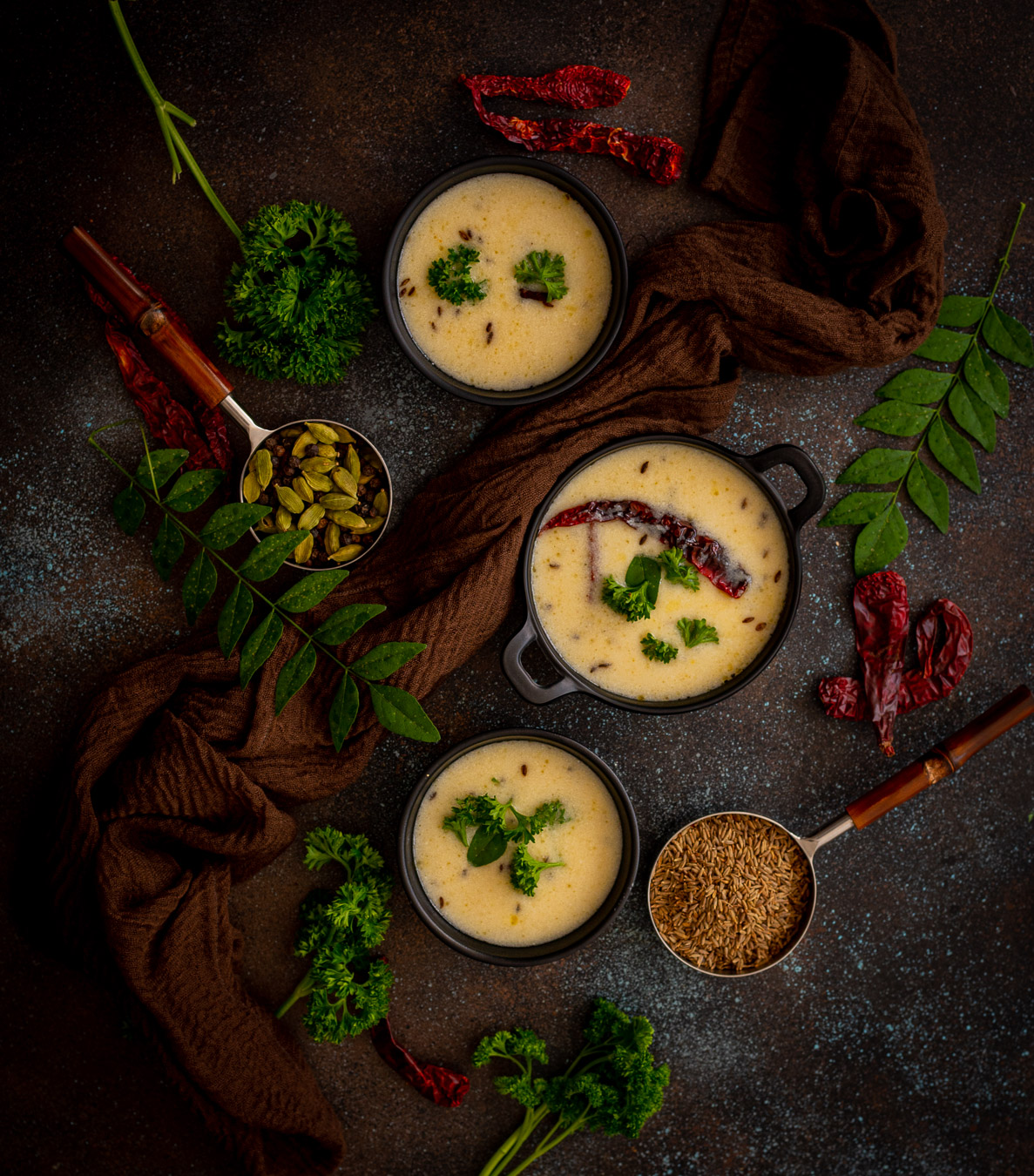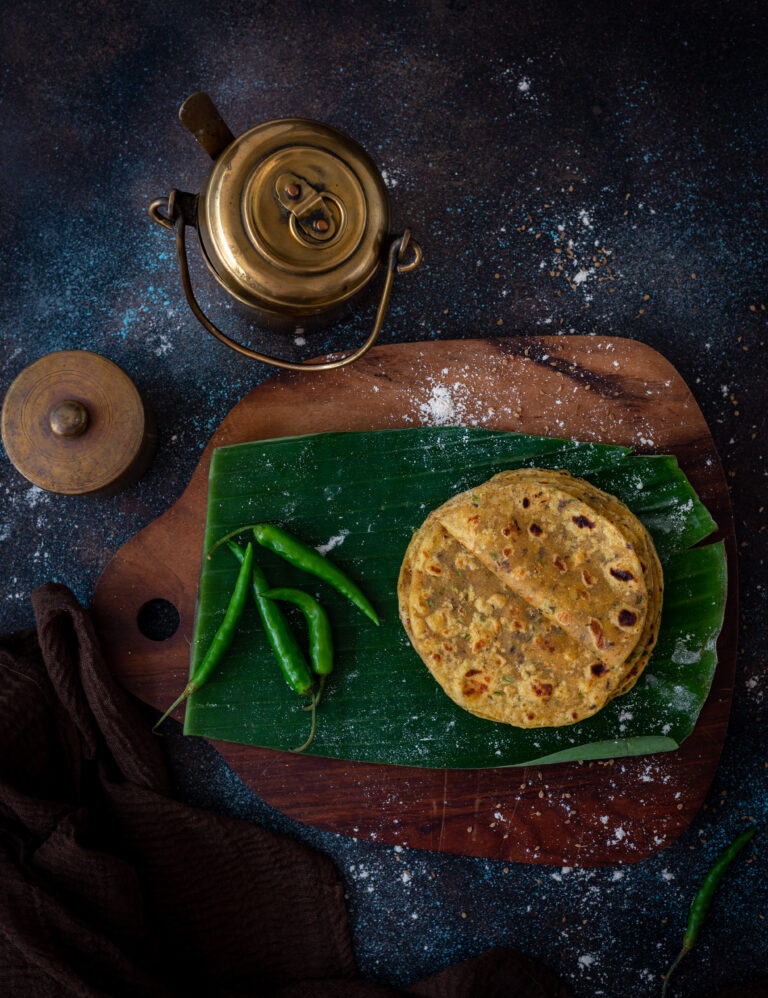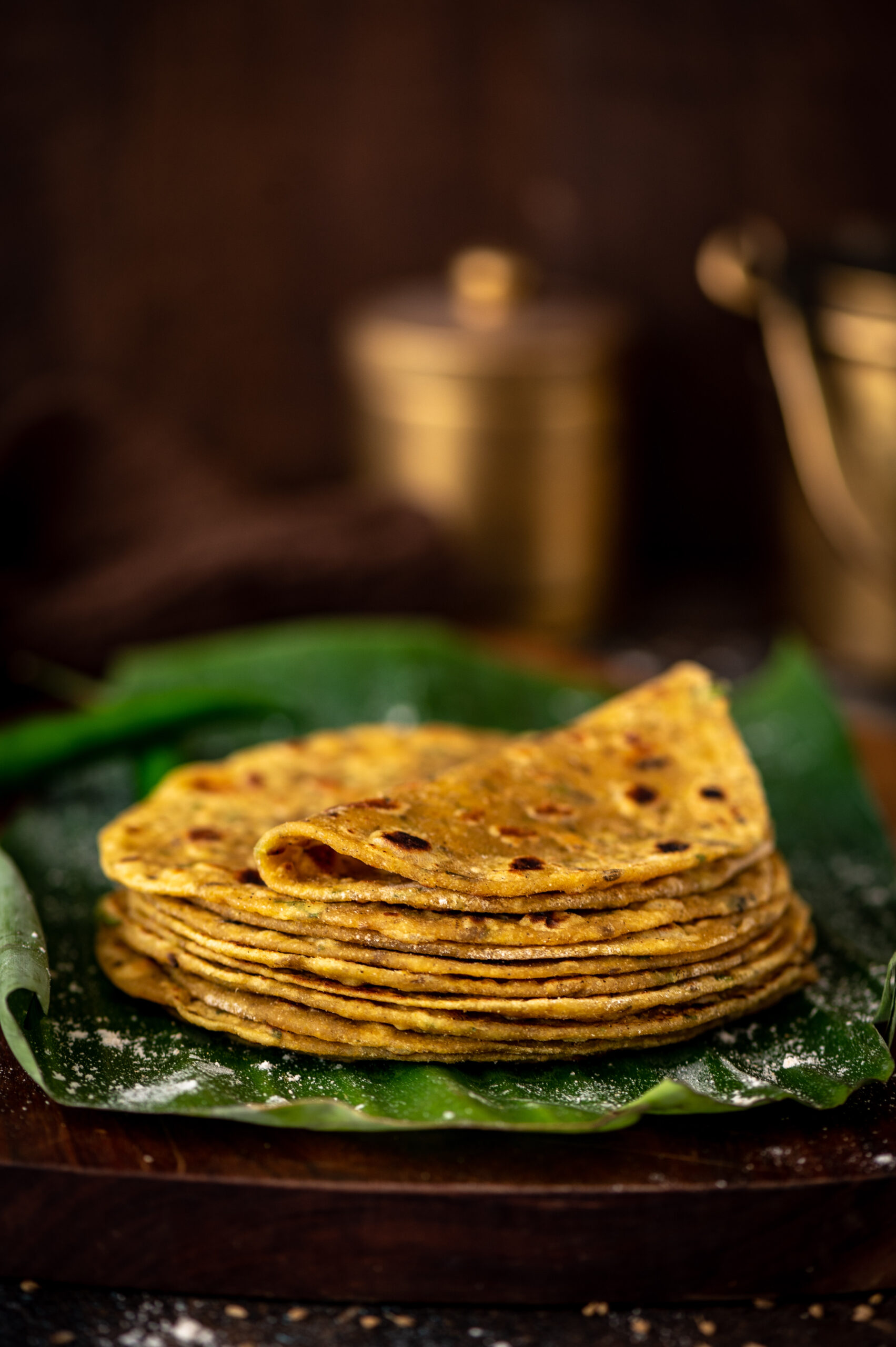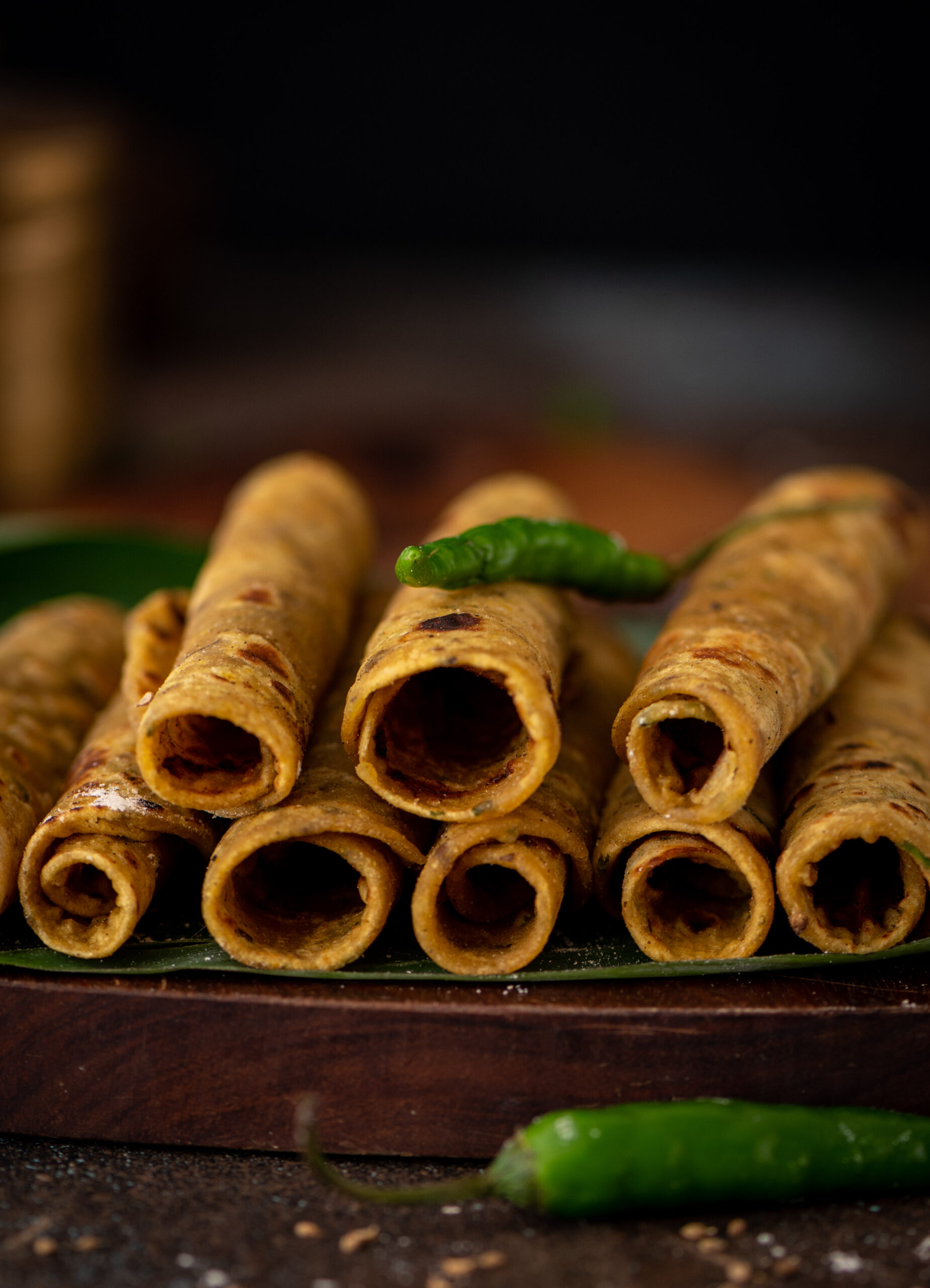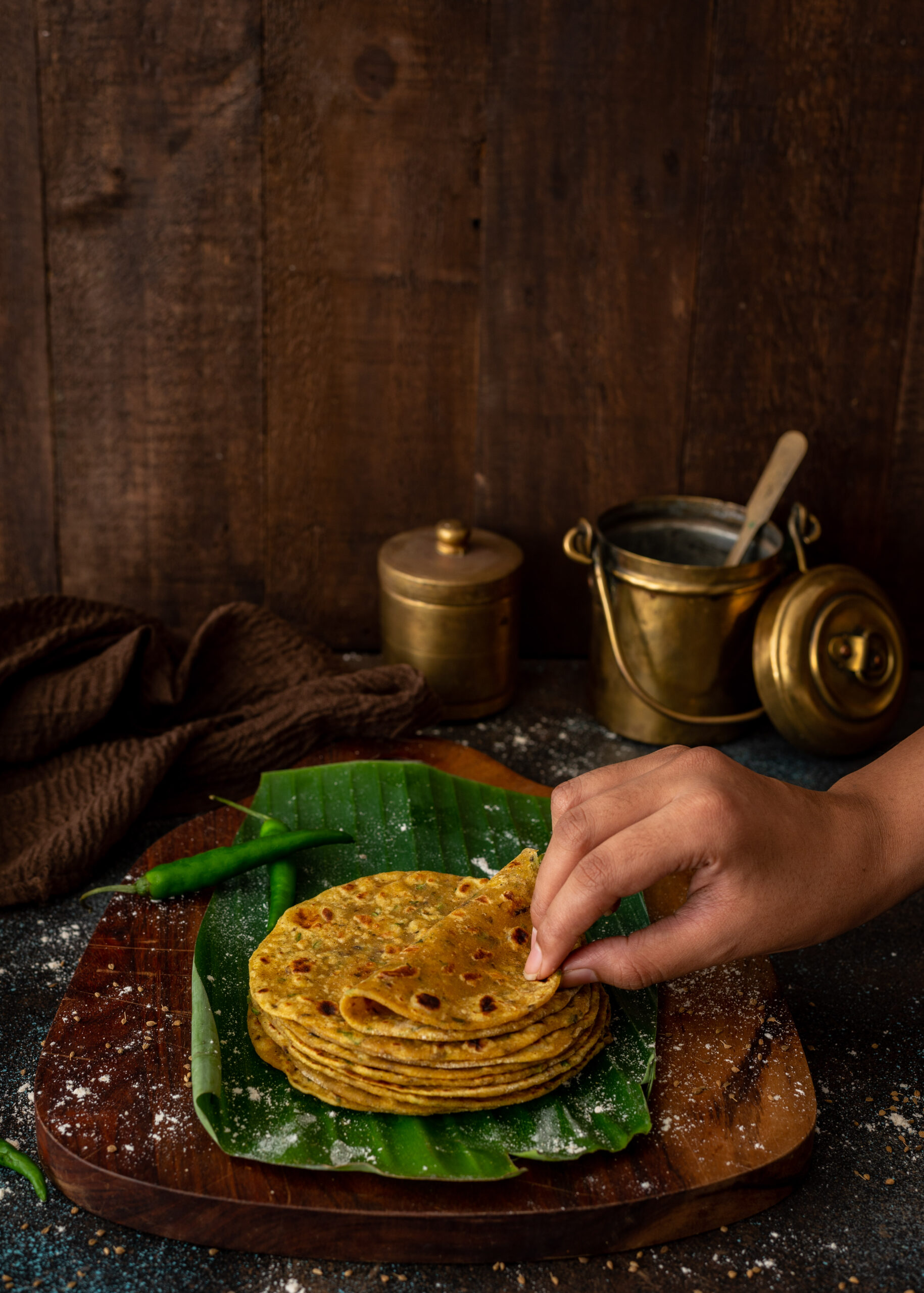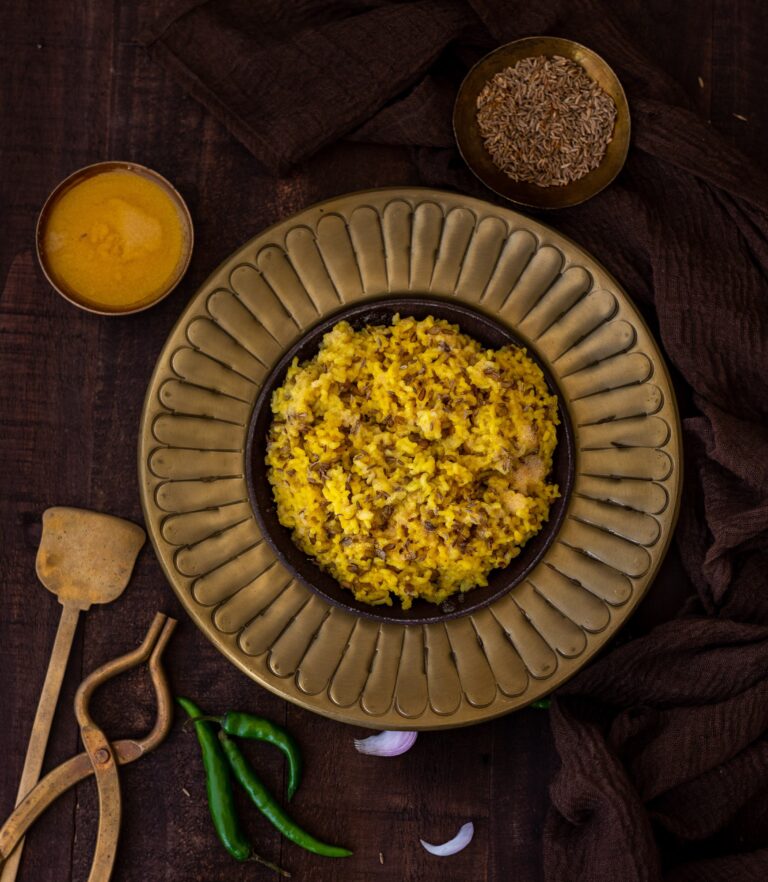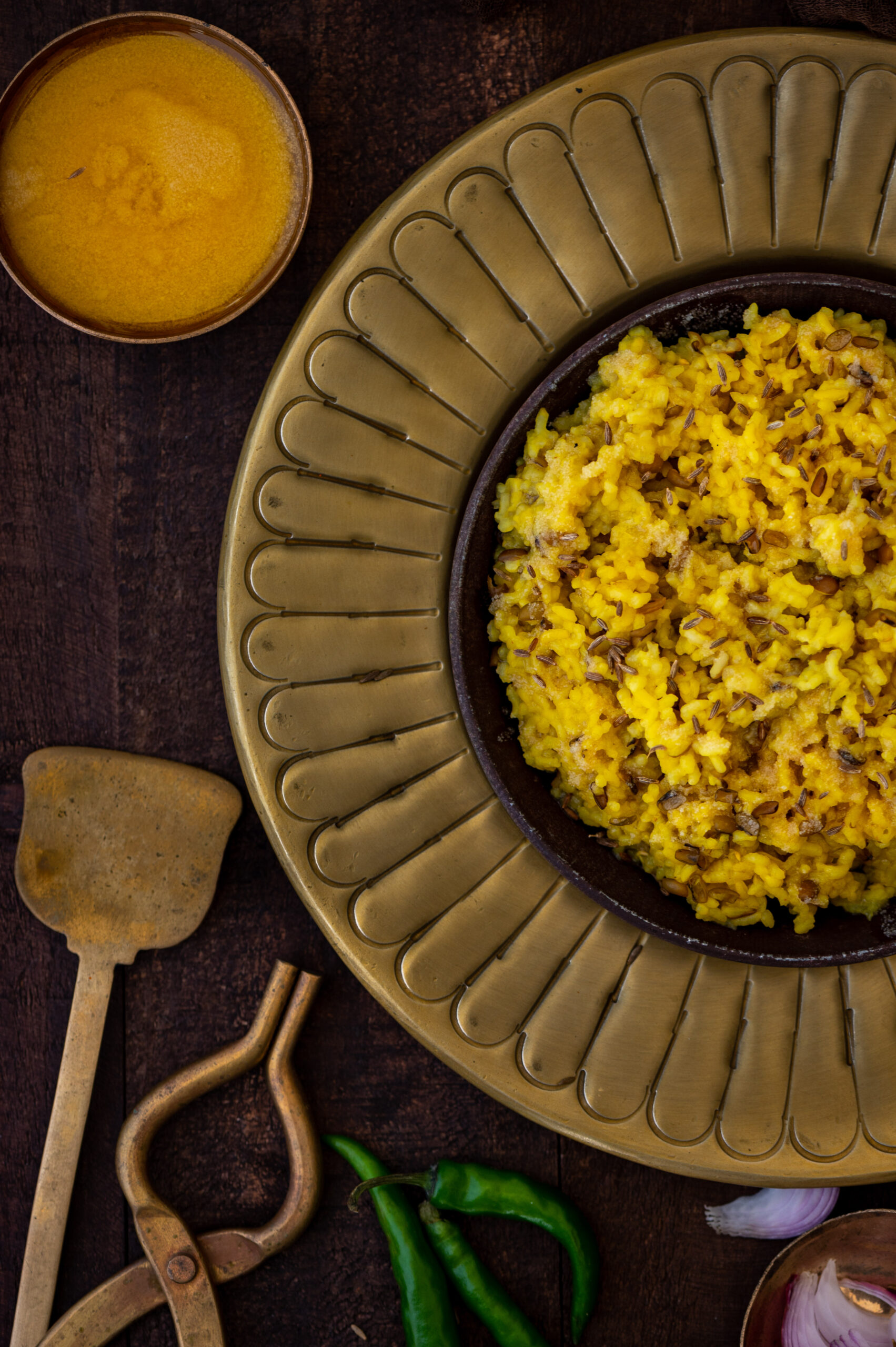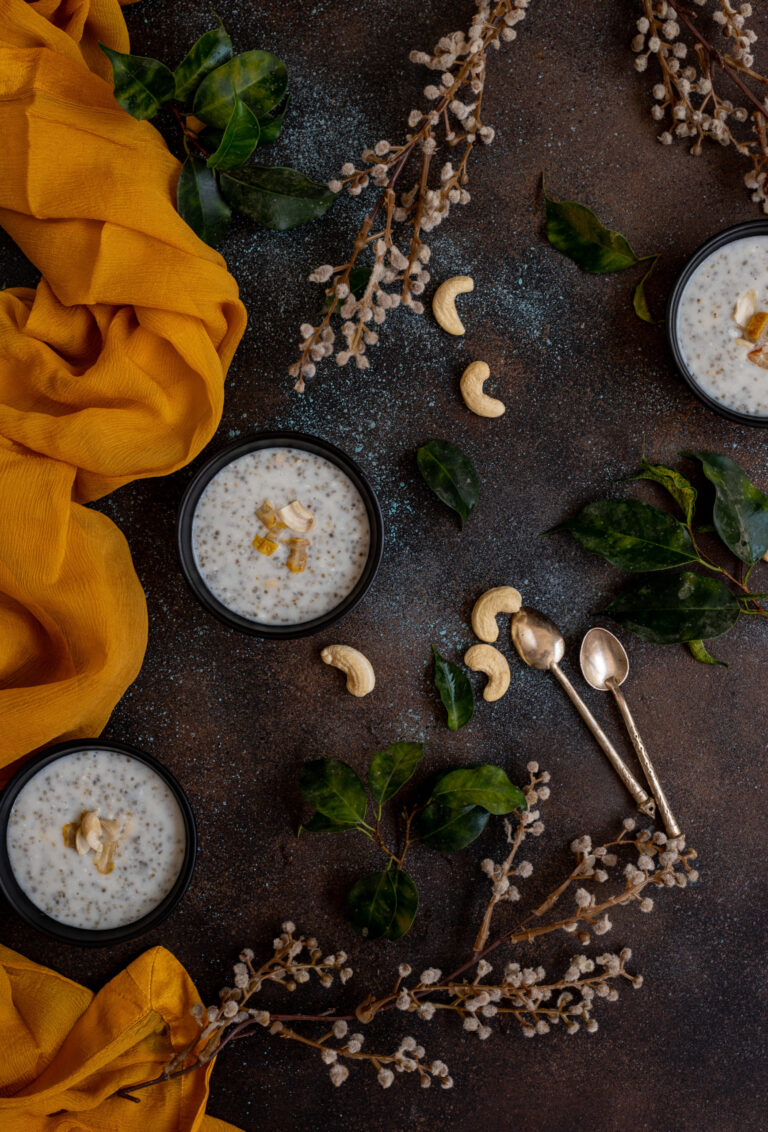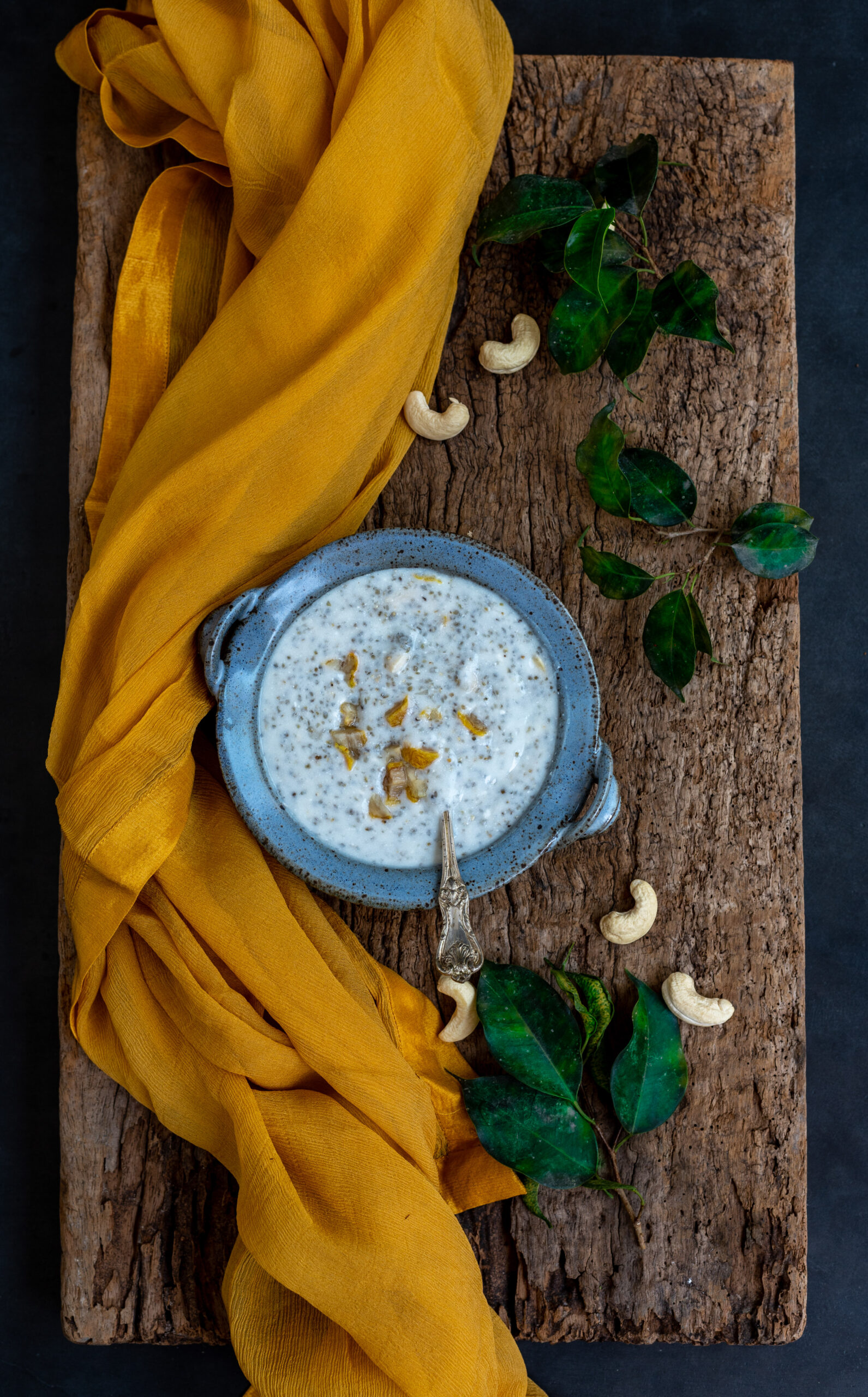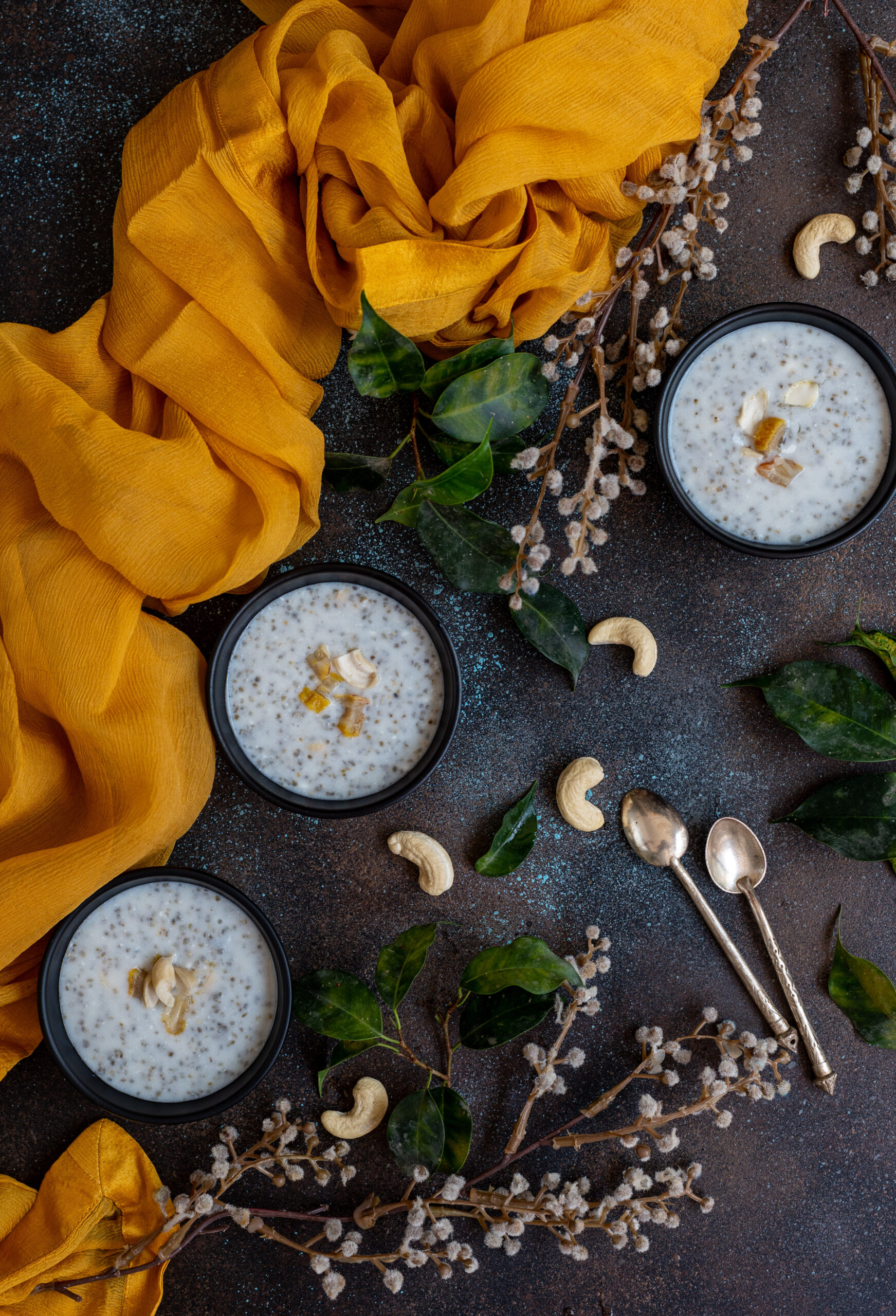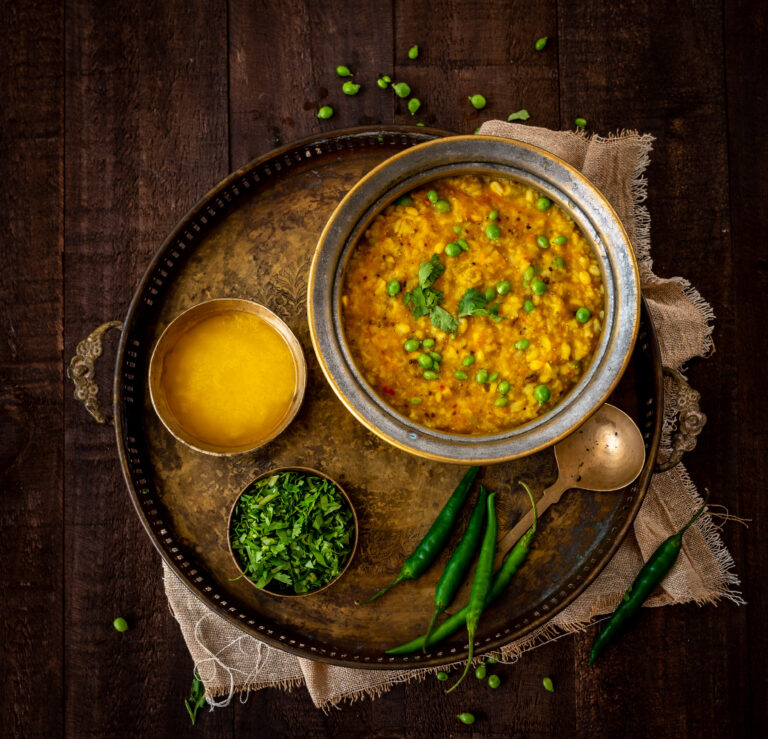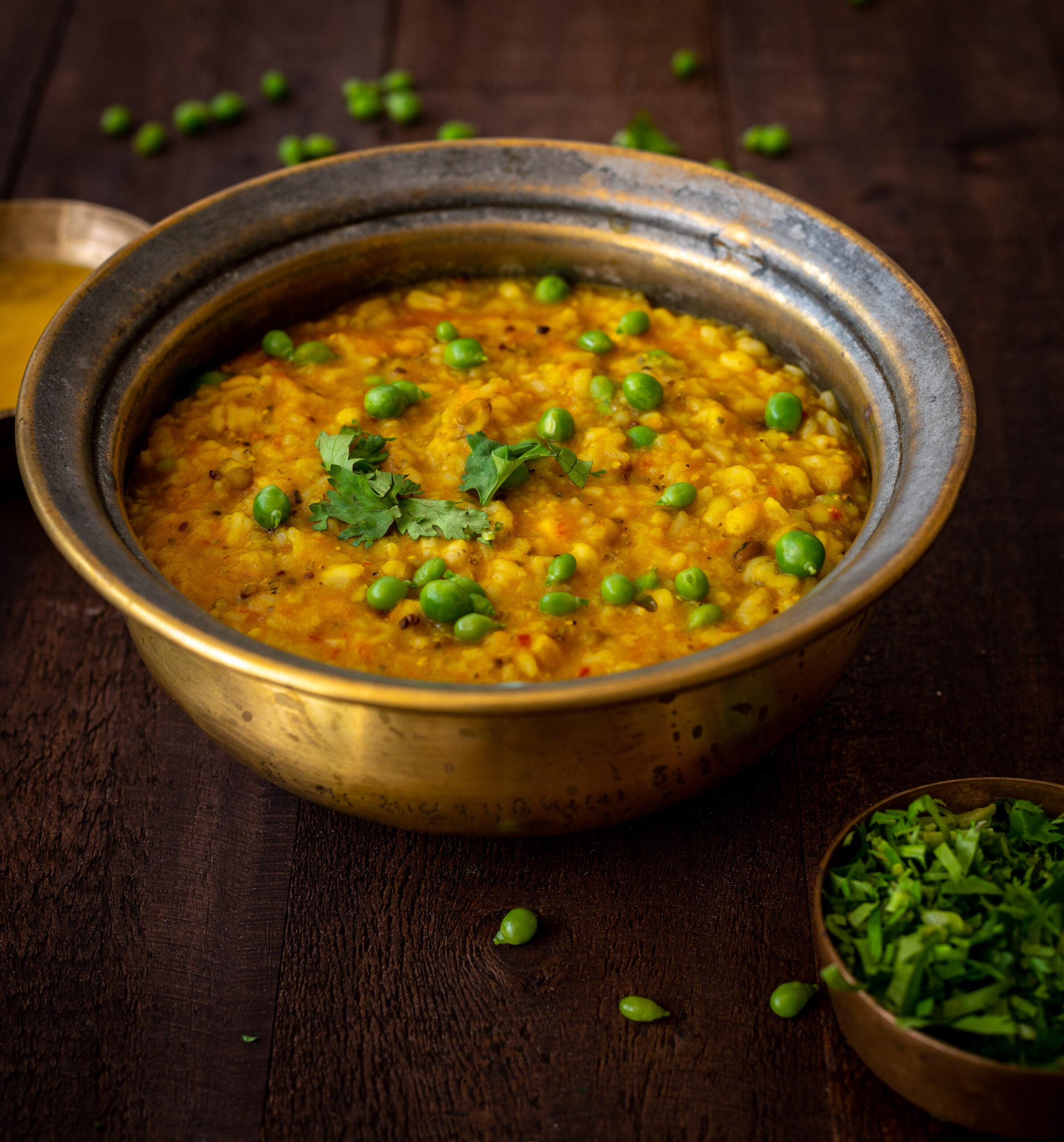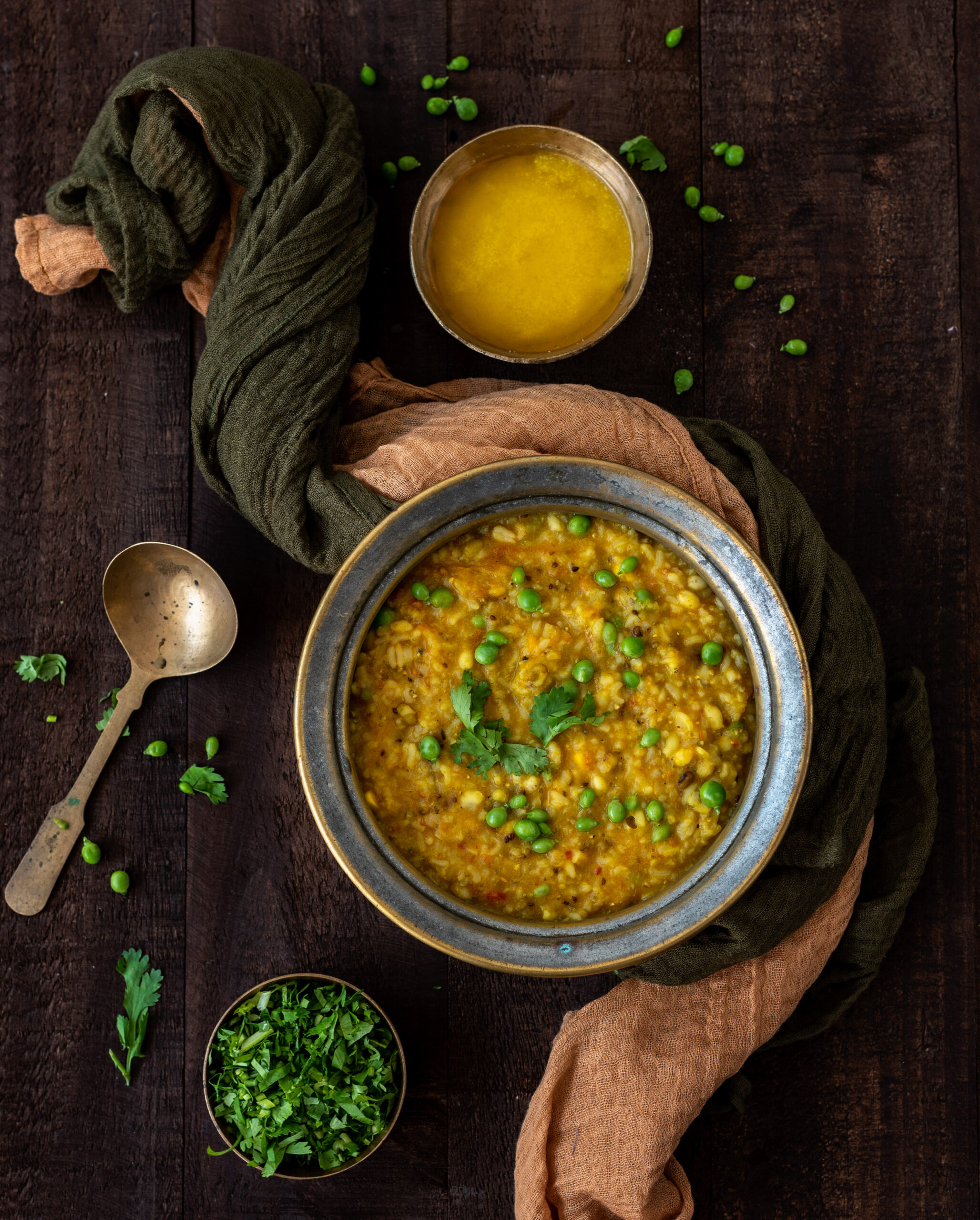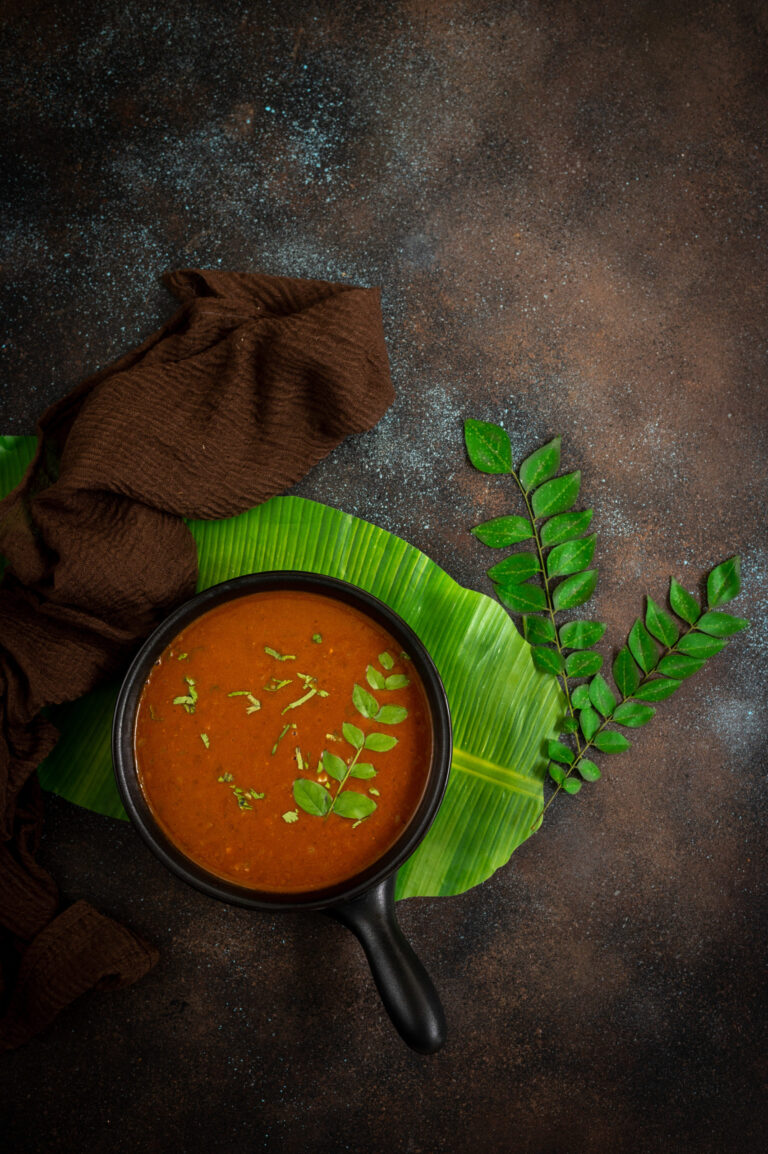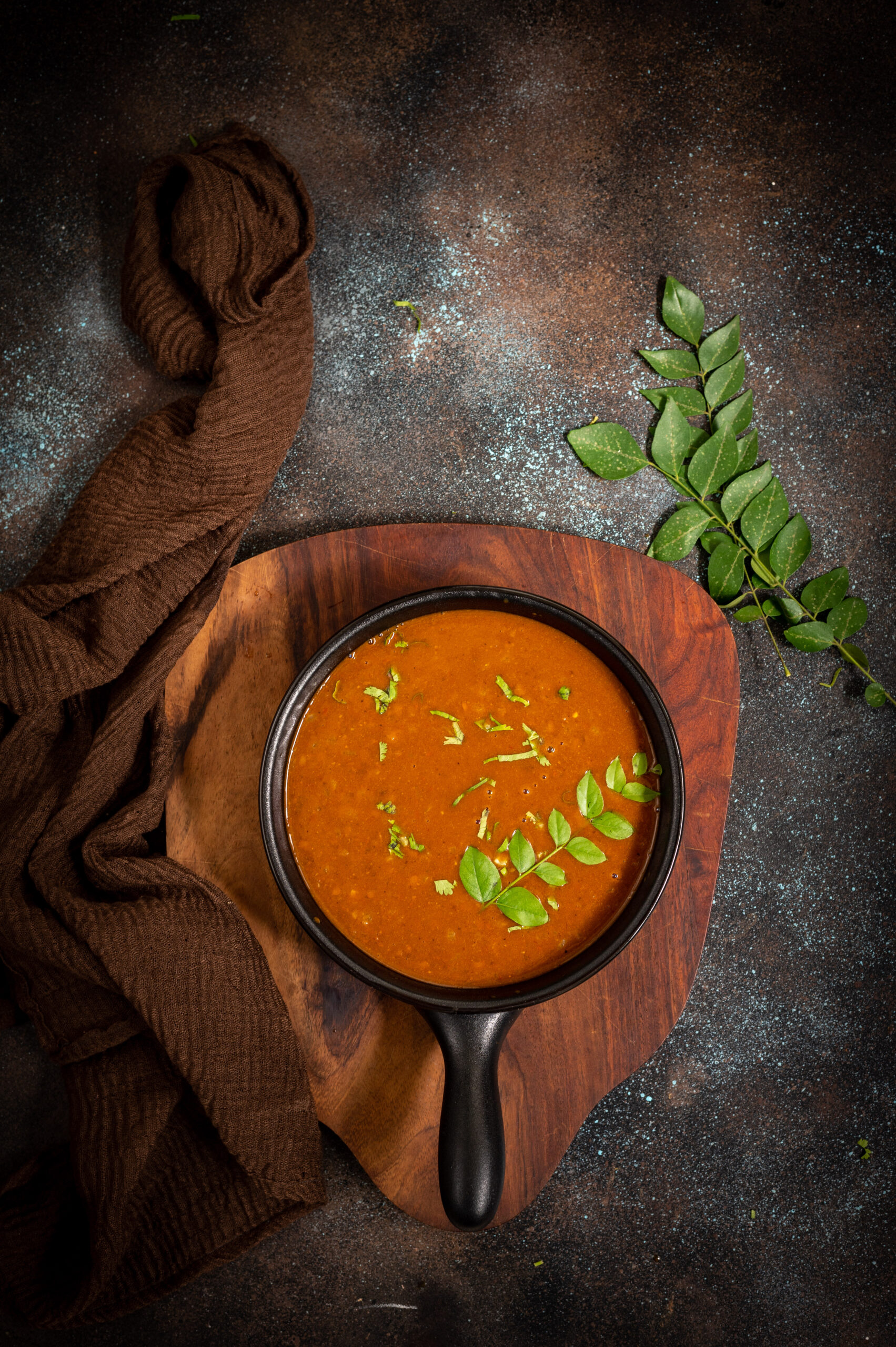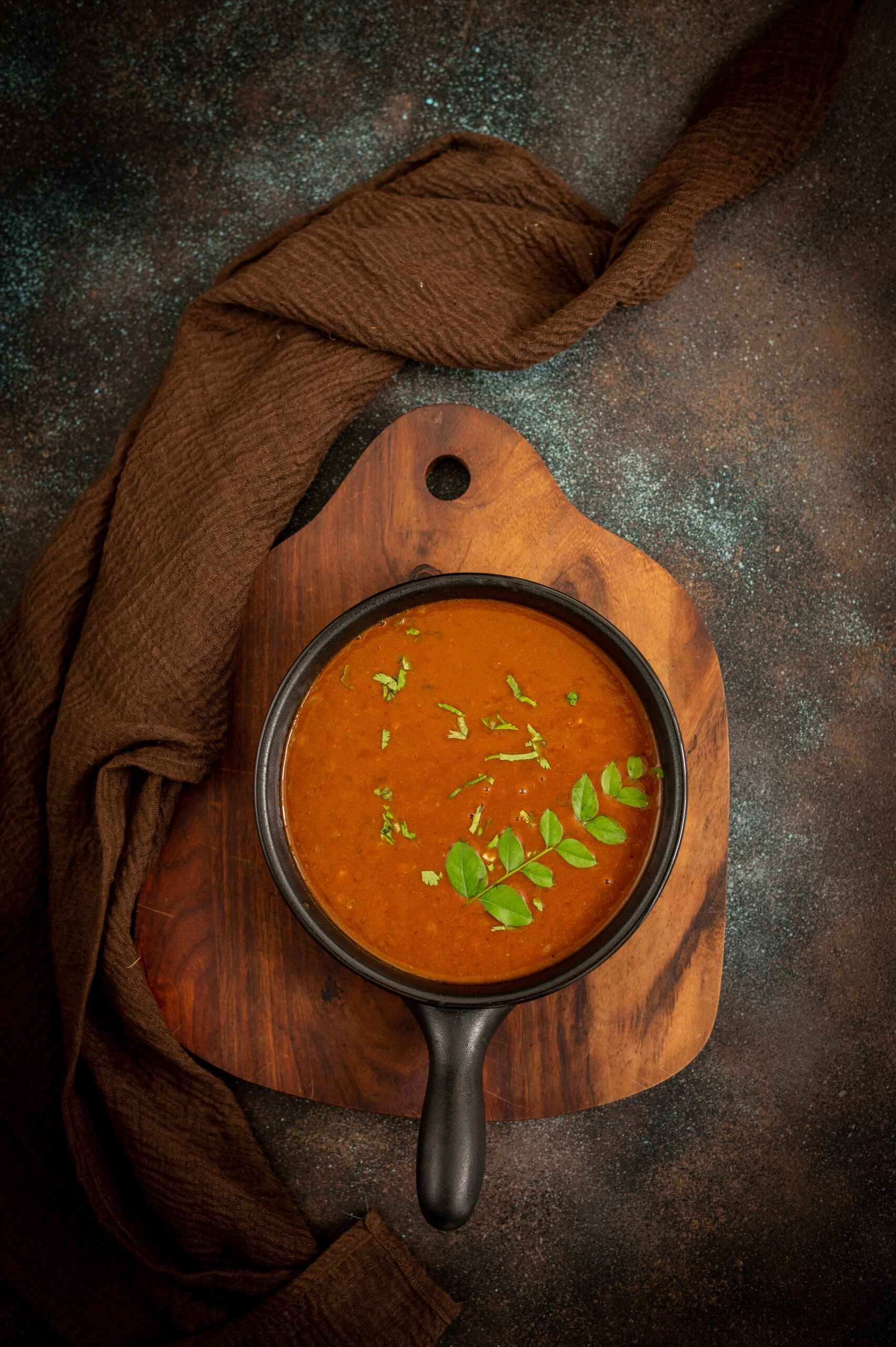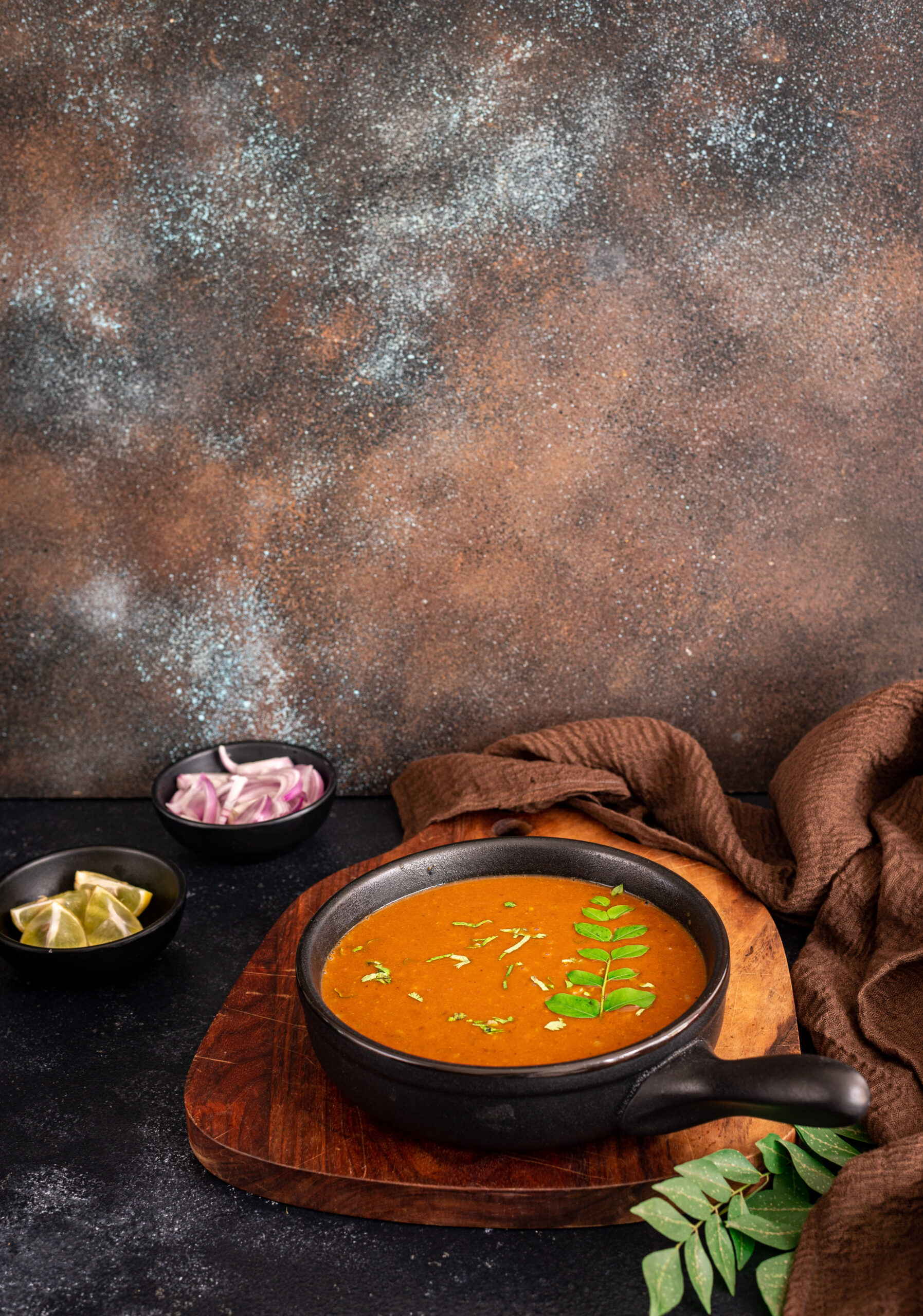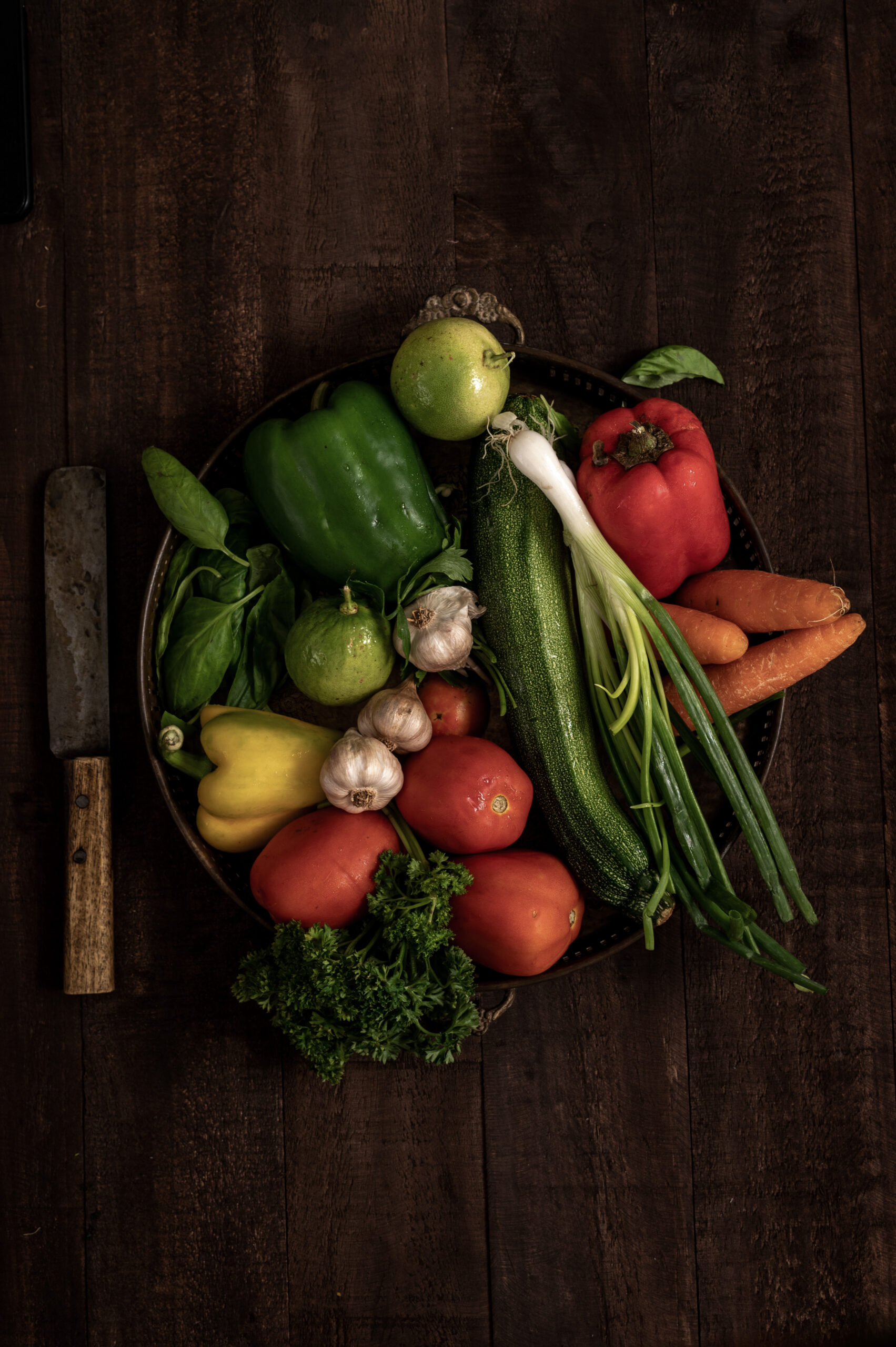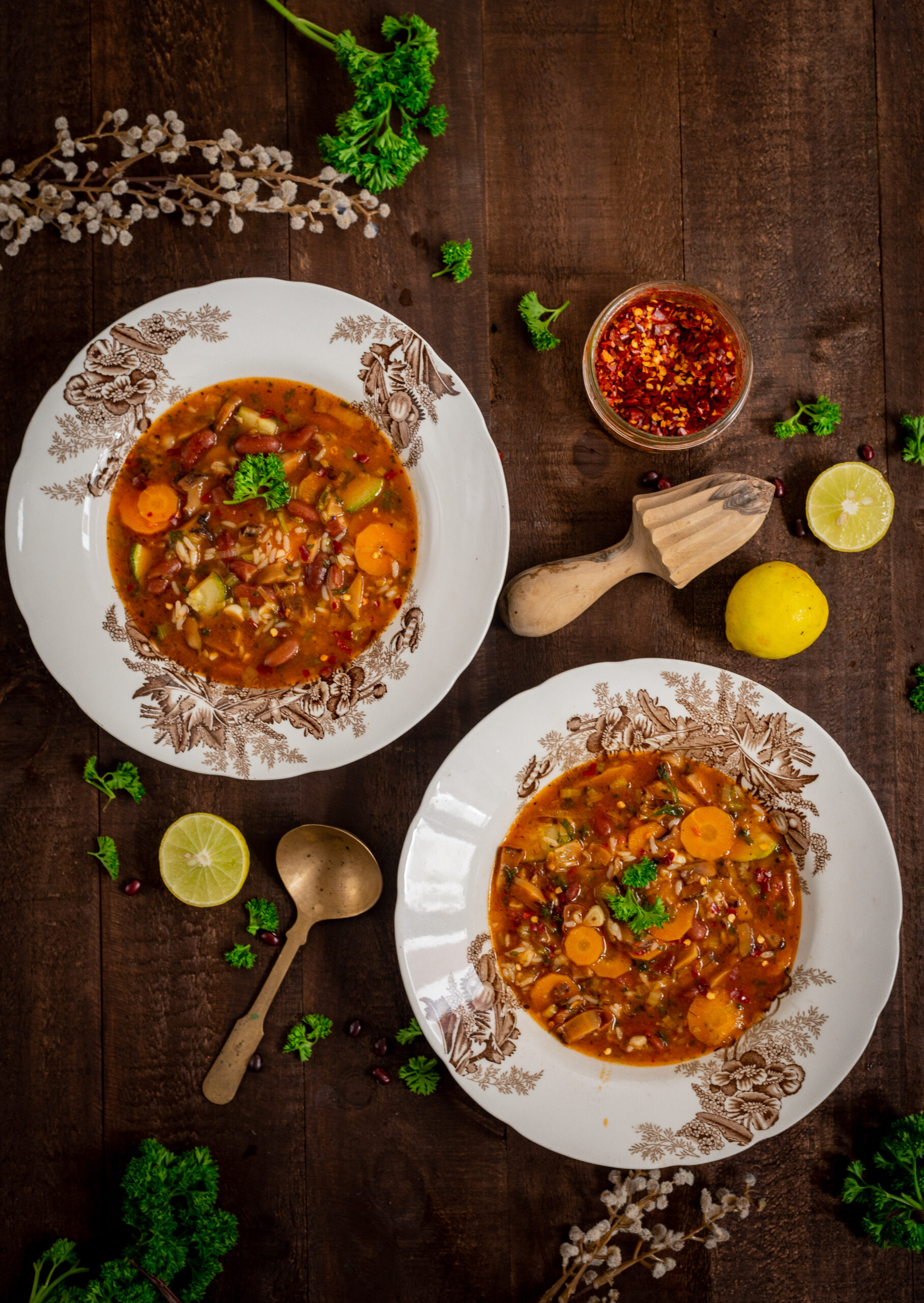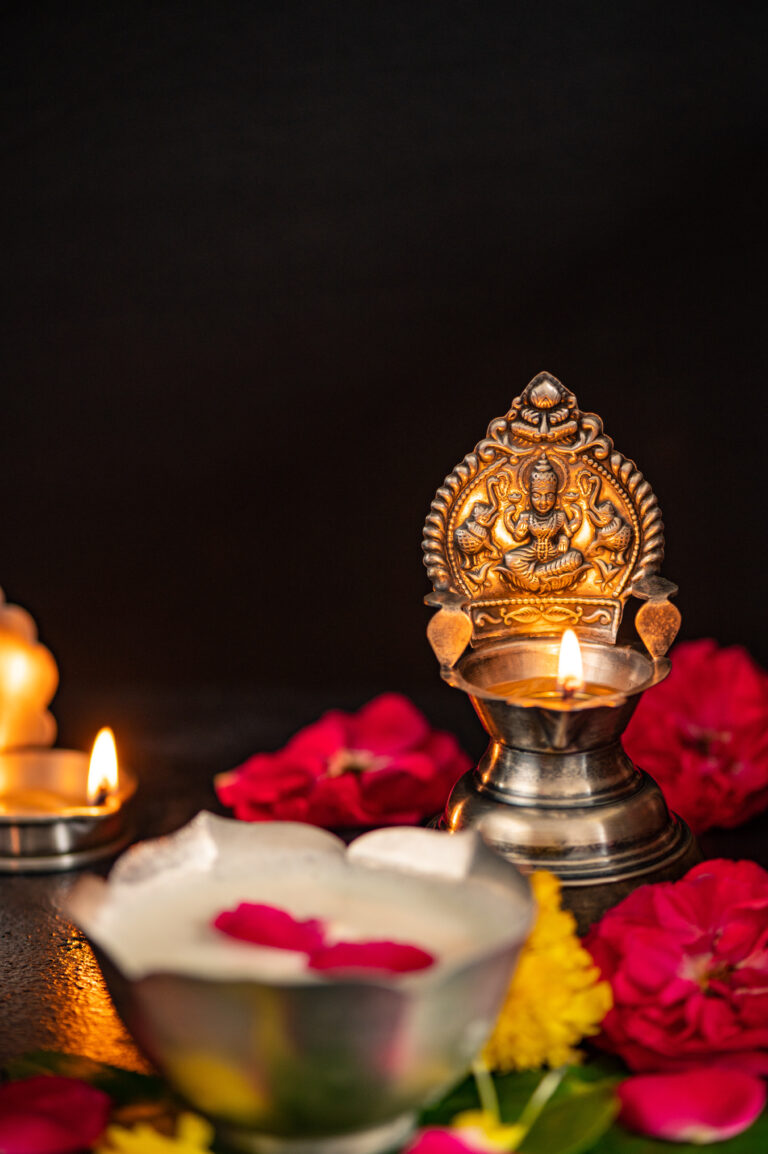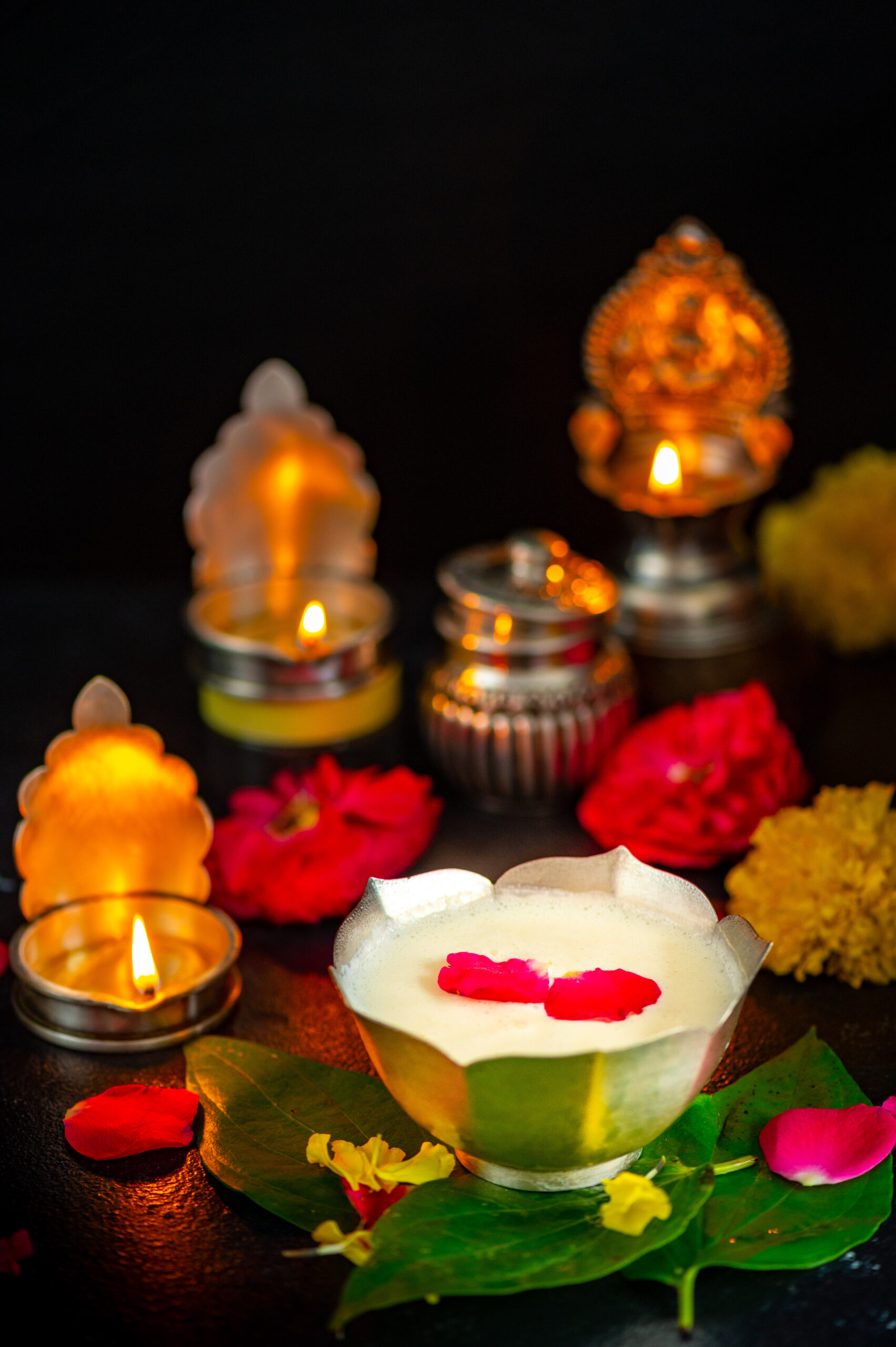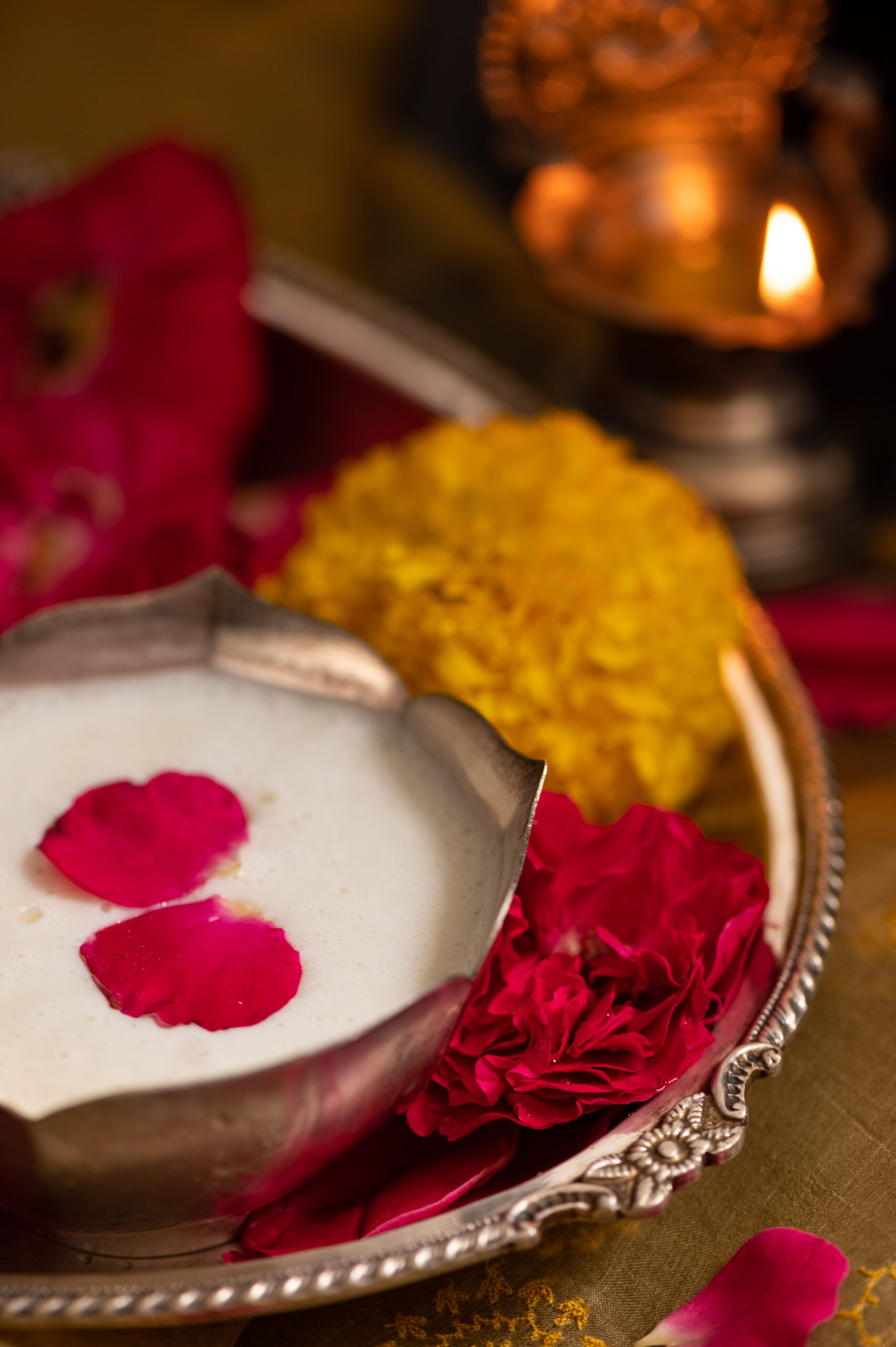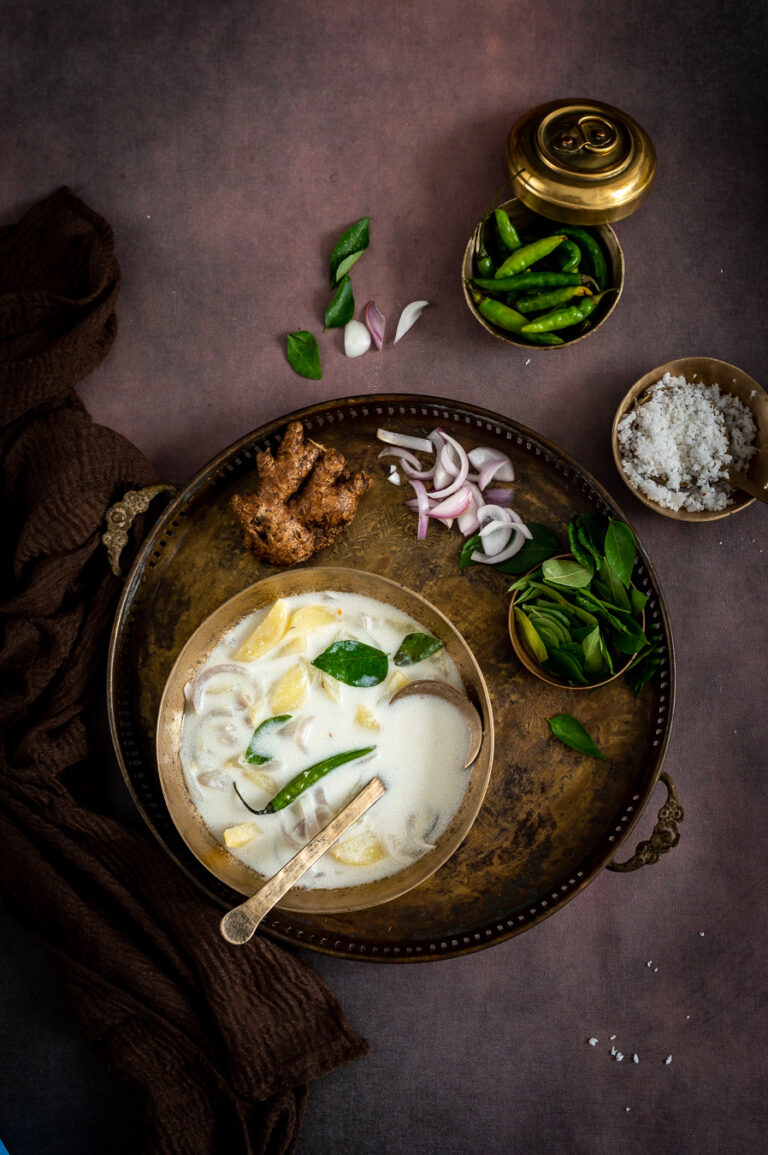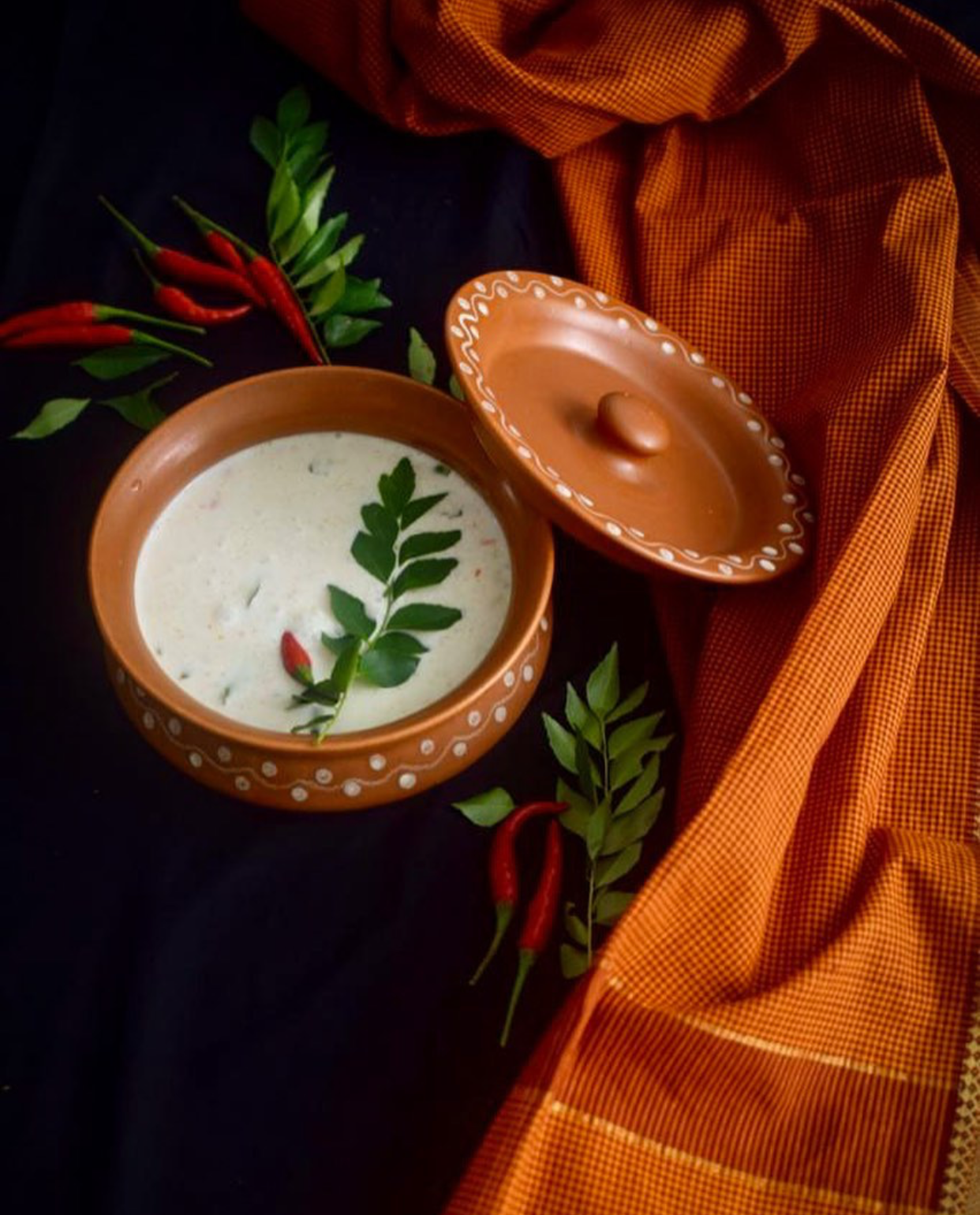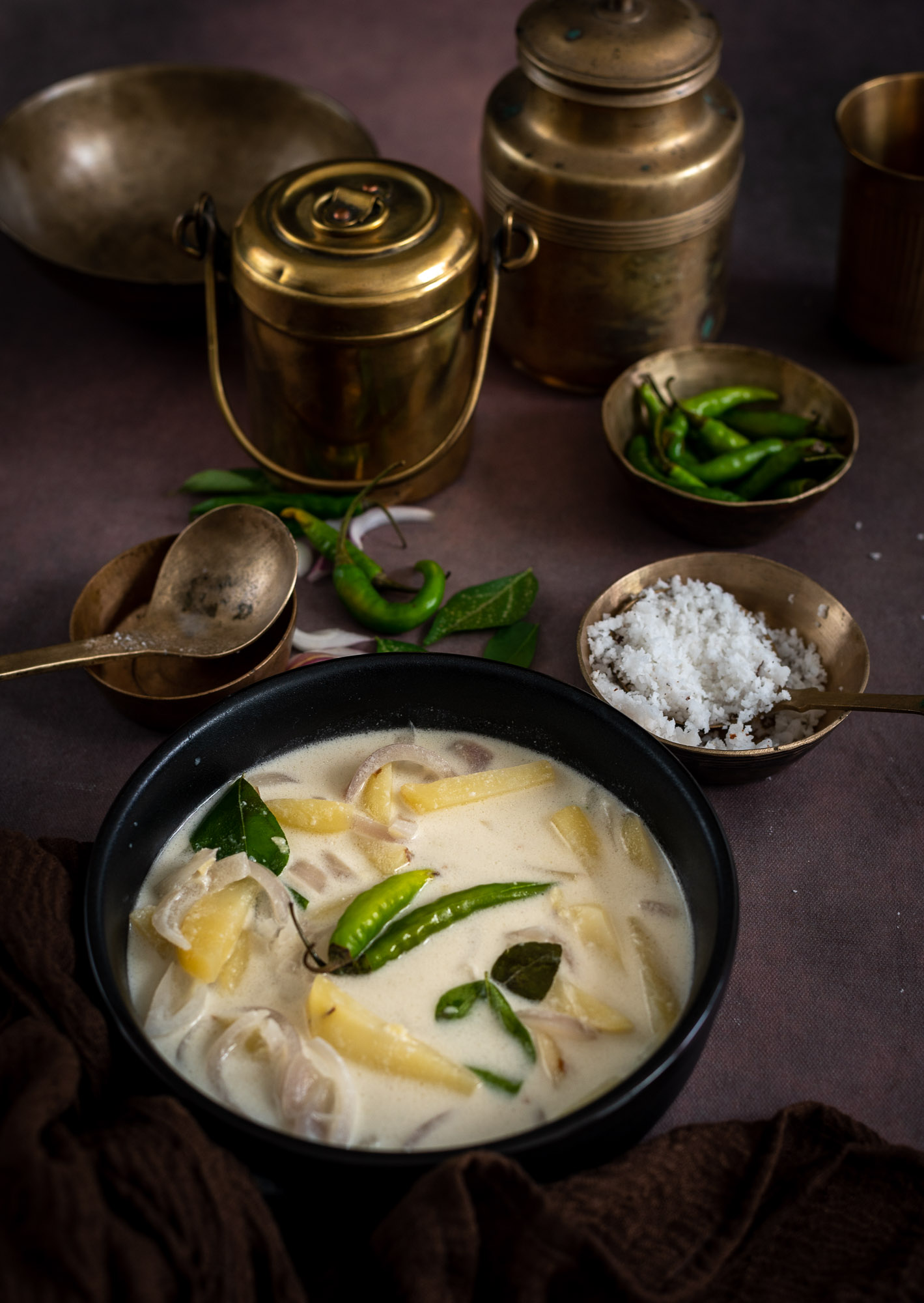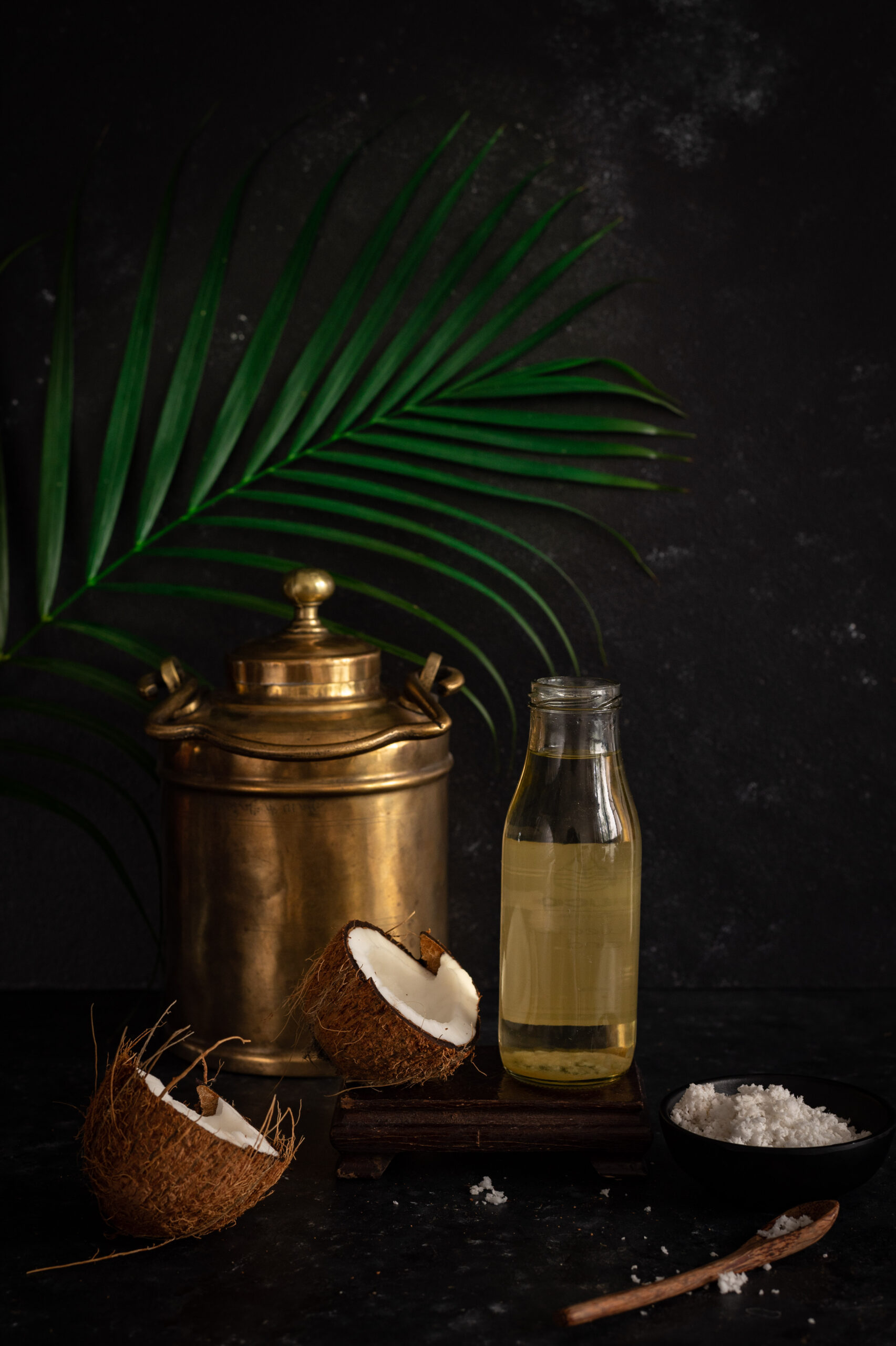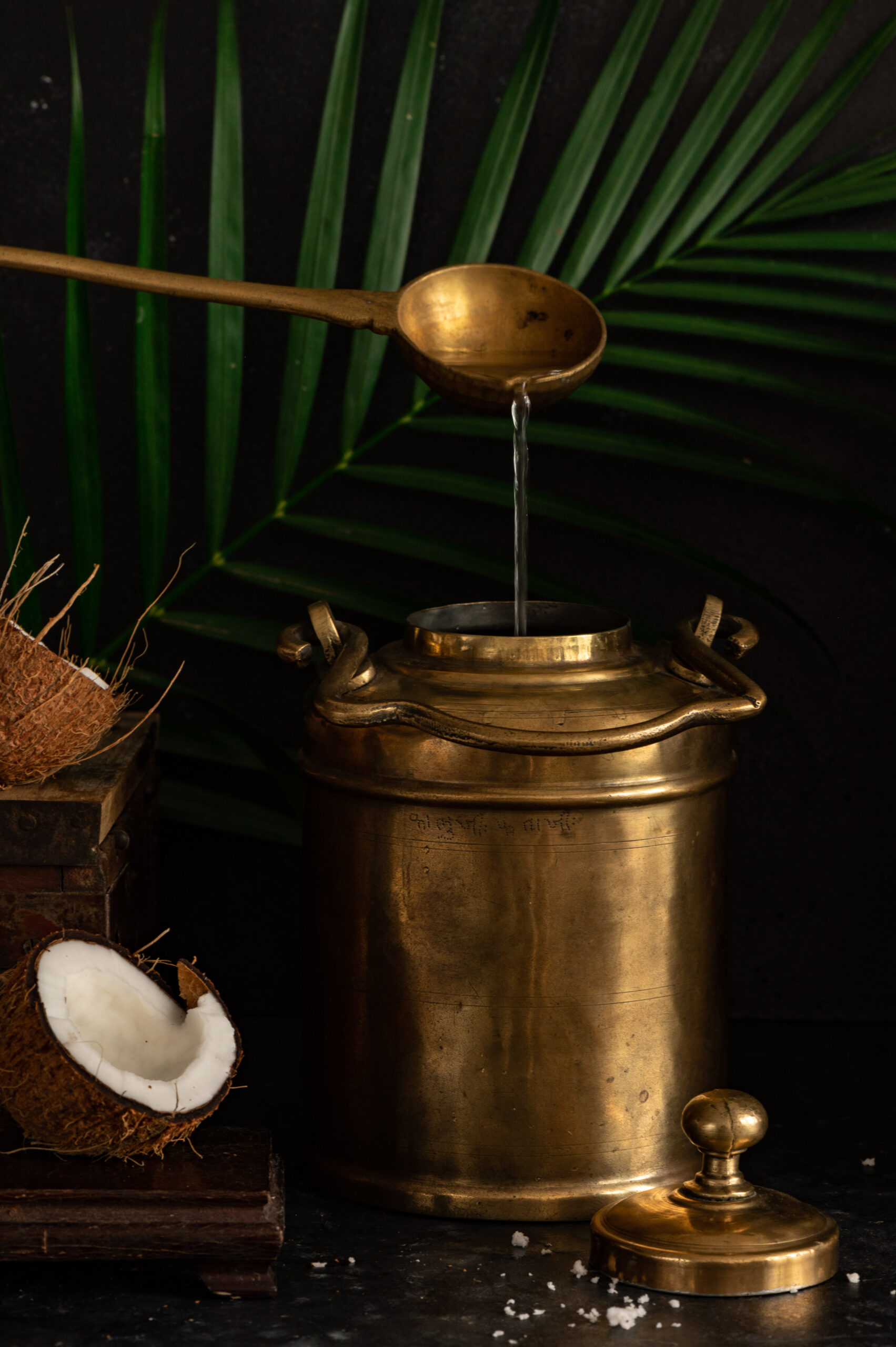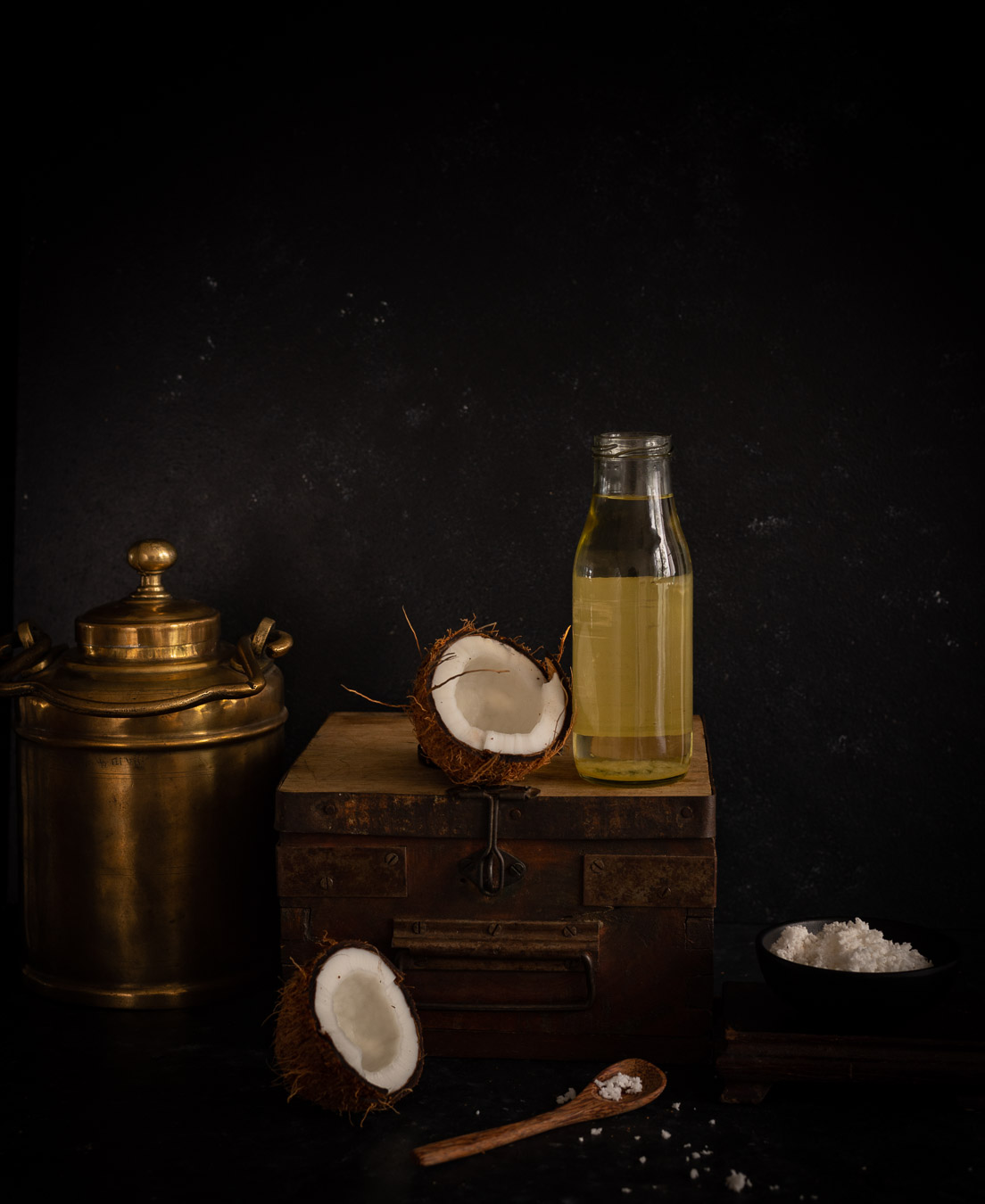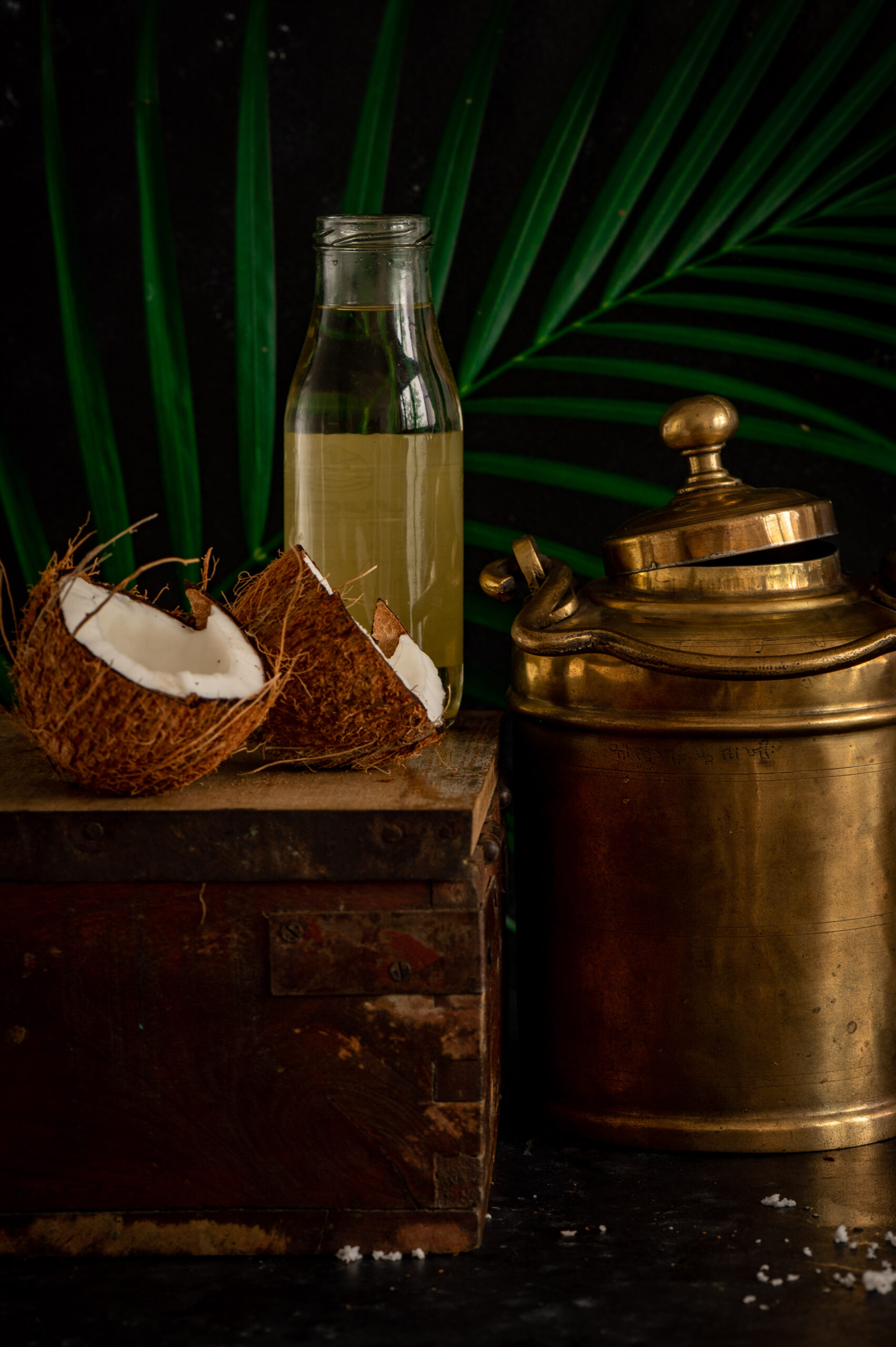I dropped references to kadhi not once but twice on this blog recently, during the grains-based Gujarati recipe series I was sharing. I’m delighted to feature the recipe for this wonderful accompaniment today, and I hope it gives a superb flavouring to all your khichdis, khichdos and much more.
Kadhi was traditionally made from soured buttermilk. Here in South India, even today, many households make our dairy products at home. I still prepare my daily yoghurt and let it set overnight. While I was growing up, my mother and most of our neighbours also made butter, cream and ghee regularly. As long as milk and a fridge were available, these resourceful homemakers ensured that their families had a steady, homemade supply of these essential ingredients.
So my mother would often collect cream in a pot, store it in the fridge, and then make white butter from it. We absolutely loved this as kids, and ate it with everything, including rotis. There would always be quite a lot of white butter prepared, and from it she would also make ghee. The residue of that white butter would be soured buttermilk, and from this she would make kadhi. It’s truly amazing how far she could stretch a vessel of milk!
So on the days when she made butter, we would almost invariably have kadhi, because she would never let that soured buttermilk go to waste. My father loved this kadhi, and never ate that great Gujarati mainstay, dal (the rest of my family are ardent dal enthusiasts, and you can check out my recipes for horse gram dal, mixed dal and classic Gujarati dal). I prefer lentils and legumes myself, but always prepare some kadhi for my father when he visits.
As I’ve said before in the posts in the Second Helpings series, culinary innovations are truly the forte of ordinary people over so many generations, who would dream up ways and means to make every bit of food go an extra mile. I too have learned that another good way to make kadhi, rather than to prepare butter and use its residue, is with yoghurt that’s been in the fridge for a few days.
If you’ve never tried a kadhi before, I would describe it as being an equivalent to the South Indian mor-kulambu. A kadhi is thinner in consistency, but it has a similarly spicy, slightly sour flavour. There are also mango kadhis, in which chunks of the fruit are added to the mixture when they are in season. These may be similar to the Tamil manga pulissery. Dumpling kadhis are another interesting variant. The recipe I will be sharing with you today is the base on which these variations are built.
Gujarati kadhi is sweetened with sugar, as with many of our dishes. This is a culinary twist that’s a signature of the cuisine, and you may prefer to make yours without it. We also do not add turmeric, and prefer to keep the kadhi white in colour. It is always tempered with ghee and just a few spices, so that just a subtle hint of their flavours are infused.
There’s one way in which my kadhi differs from my mother’s, and that is in my addition of curry leaves, which she never used. I have a sense that curry leaves as an ingredient are a South Indian element, which is why they seem to be absent in Gujarati cuisine. I’ve never come across any dish that uses curry leaves in any form in Gujarat, whereas here in Tamil Nadu we prolifically use powders, chutneys and the fresh leaves too. I’ve noticed in my travels there, especially to agricultural areas, that curry leaf trees aren’t abundant either. But like I said, this is just a sense of things. I would absolutely love to hear any insights you may have into curry leaves and their role or lack thereof in Gujarati culture or cuisine. Please do shed some light if there’s anything you may know about this topic.
I’d love to hear those insights over a tummy-filling thaali, but in these socially-distanced times, here’s the next best thing: my recipe, and a request to share what you know in return!

Kadhi
(Serves: 2 people)
½ cup yoghurt
1¼ cups water
1 tablespoon chickpea flour
½ teaspoon green chilli/ginger paste
Salt to taste
1 teaspoon sugar (optional)
1 tablespoon ghee
½ teaspoon cumin seeds
¼ teaspoon methi seeds (fenugreek)
A pinch of asafoetida
2 dry red chillis
2 cloves
1 stick cinnamon
1 cardamom
1 sprig curry leaves
In a pot, add the yoghurt, water, chickpea flour, ginger and chili pastes as well as the salt. Beat well until the mixture is fully incorporated.
Allow this to cook for approximately 7-8 minutes on a medium flame. Stir constantly so as to prevent the yoghurt from splitting.
Add the fenugreek seeds. Boil some more. Once this has cooked, set aside.
Prepare the tempering. For this, use a small pan. Add ghee and then add the cumin seeds, cardamom, cloves and dry red chillis. Once the cumin seeds splutter, add the curry leaves and the asafoetida, and immediately pour the tempering into the kadhi.
Garnish with coriander leaves, stir then serve hot. As mentioned earlier, kadhi goes beautifully with several kinds of khichdis (or you could have it with white rice, in which case it becomes the meal known as “kadhi-bhat”). It’s wonderful as part of a simple, traditional meal. I’d love to know what you think of it!
